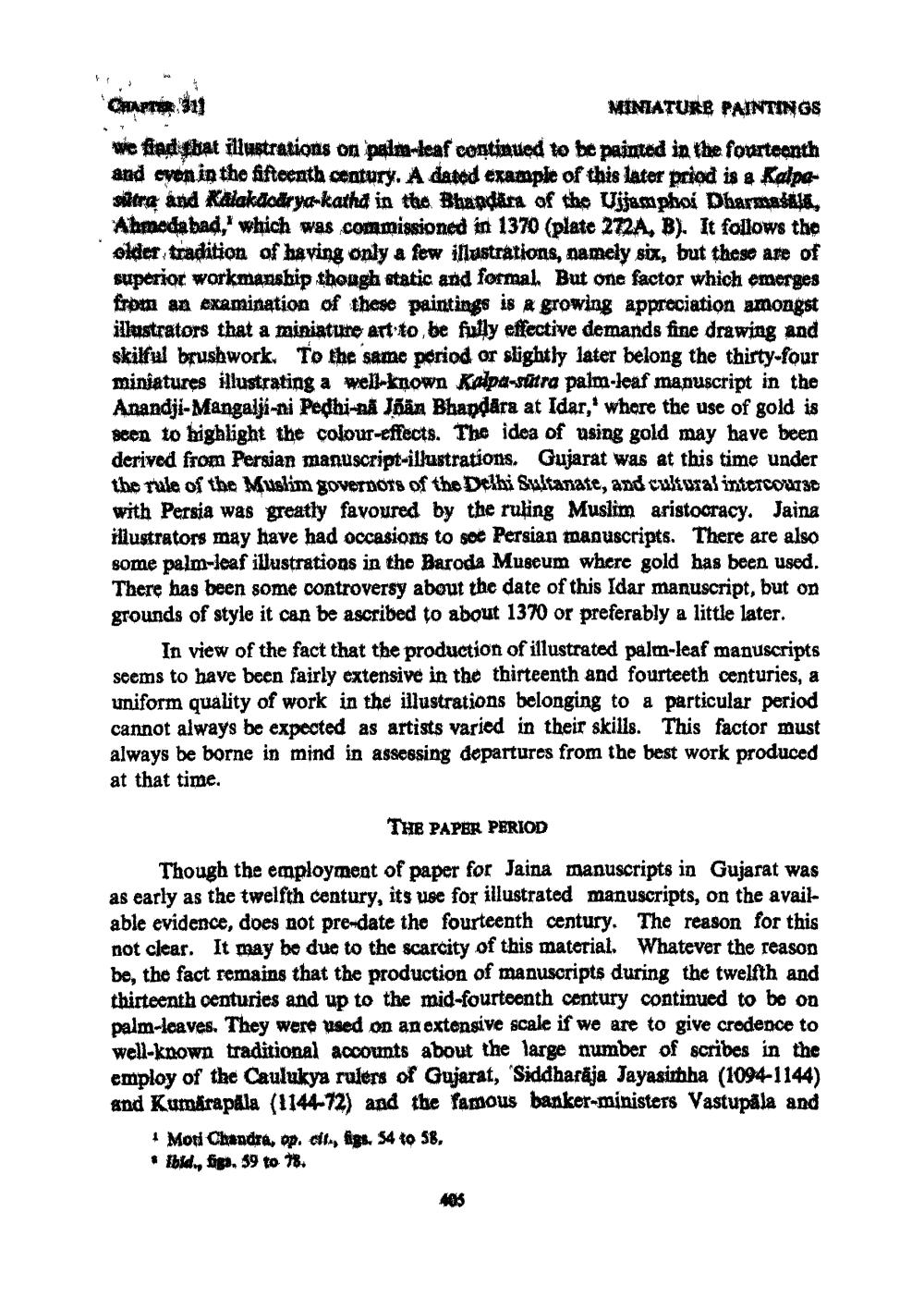________________
MINIATURE PAINTINGS We find that illustrations on palm-leaf continued to be painted in the fourteenth and even in the fifteenth century. A dated example of this later priod is a Kalpa
tra and Kalakdodrya-katha in the Bhandara of the Uitasploi Dharmasti. Ahmedabad," which was commissioned in 1370 (plate 272A, B). It follows the older tradition of having only a few illustrations, namely six, but these are of superior workmanship though static and formal. But one factor which emerges from an examination of these paintings is a growing appreciation amongst illustrators that a miniature art to be fully effective demands fine drawing and skilful brushwork. To the same period or slightly later belong the thirty-four miniatures illustrating a well-known Kalpa-sutra palm-leaf manuscript in the
ndji-Mangalji-ni Pedhi-ni Jhän Bhandara at Idar, where the use of gold is scen to highlight the colour-effects. The idea of using gold may have been derived from Persian manuscript-illustrations. Gujarat was at this time under the rule of the Muslim governors of the Delhi Sultanate, and cultural intercourse with Persia was greatly favoured by the ruling Muslim aristocracy. Jaina illustrators may have had occasions to soc Persian manuscripts. There are also some palm-leaf illustrations in the Baroda Museum where gold has been used. There has been some controversy about the date of this Idar manuscript, but on grounds of style it can be ascribed to about 1370 or preferably a little later.
In view of the fact that the production of illustrated palm-leaf manuscripts seems to have been fairly extensive in the thirteenth and fourteeth centuries, a uniform quality of work in the illustrations belonging to a particular period cannot always be expected as artists varied in their skills. This factor must always be borne in mind in assessing departures from the best work produced at that time.
THE PAPER PERIOD
Though the employment of paper for Jaina manuscripts in Gujarat was as early as the twelfth century, its use for illustrated manuscripts, on the available evidence, does not pre-date the fourteenth century. The reason for this not clear. It may be due to the scarcity of this material. Whatever the reason be, the fact remains that the production of manuscripts during the twelfth and thirteenth centuries and up to the mid-fourteenth century continued to be on palm-leaves. They were used on an extensive scale if we are to give credence to well-known traditional accounts about the large number of scribes in the employ of the Caulukya rulers of Gujarat, Siddharāja Jayasinhha (1094-1144) and Kumārapdla (1144-72) and the famous banker-ministers Vastupala and
1 Mot Chandra, op. cit., ligt. 54 to 58, • told., figo. 59 to 78.




